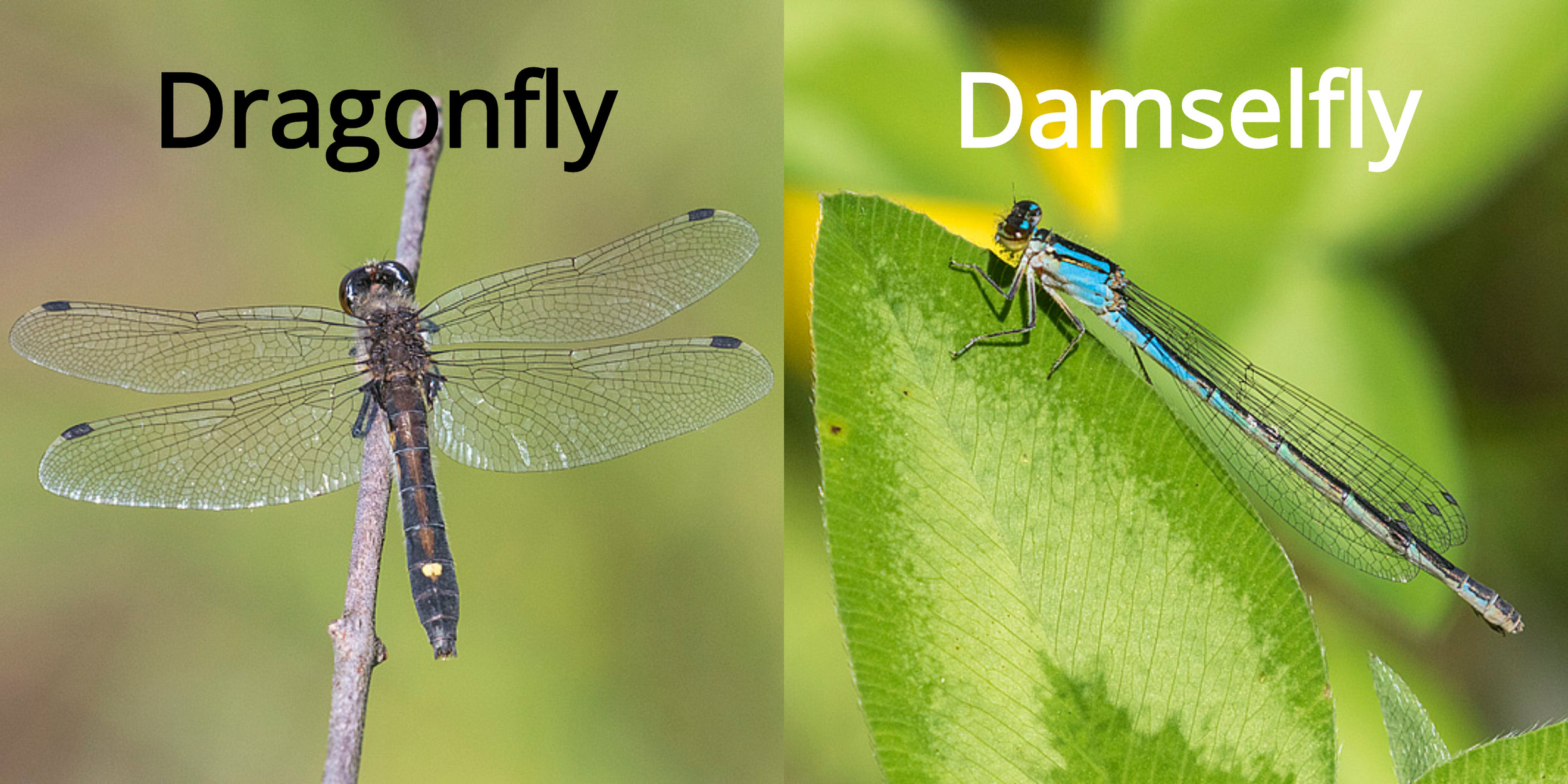Photos by Gerald Romanchuk
Dragonflies and damselflies both have long bodies and transparent wings, which makes them hard to tell apart. This blog includes some helpful tricks to help identify which one is which.
A major distinguishing factor to tell the two insects apart is the placement of their wings when they land. When dragonflies land, their wings rest perpendicular to their body, or fanned out. On the other hand, when damselflies land, their wings rest alongside their body, or tucked in. Learn about some other unique features of these two species below.
Dragonflies (Anisoptera)
Photo by Gerald Romanchuk
Fun Facts About Dragonflies
There are an estimated 49 different species of dragonflies found in Alberta.
Dragonflies are paleopterous [pronounced pay-lee-opp-tur-us], which means they cannot fold their wings back across their abdomen.
Dragonflies are predators. They eat mosquitoes, bees, gnats, and other flying insects, and can catch them in midair.
Dragonflies have massive eyes, that pretty much make up their entire head. They can almost see 360 degrees around their body, with such large and specialized eyes.
Dragonflies lay their eggs in water, and when the eggs hatch, the larvae will live underwater until they develop into the adult phase of the life cycle.
There is evidence that there were once massive dragonfly-like creatures that roamed the earth. These insects were thought to be the size of modern birds, with a wingspan of 75 centimetres. These massive dragonflies were named Meganeuropsis, and fossils show many similarities with members of today’s Odonata family.
Damselflies (Zygoptera)
Photo by Gerald Romanchuk
Fun Facts About Damselflies
There are an estimated 23 different species of damselflies found in Alberta.
The wings of a damselfly look similar to the wings of a dragonfly in that they are both transparent with visible veins. However, damselflies are neopterous [pronounced knee-opp-tur-us], which means they can fold their wings back alongside their abdomen.
Damselflies have smaller eyes than dragonflies.
Like dragonflies, damselflies are also quite carnivorous, eating mostly flying insects.
Damselflies are generally a little bit smaller than dragonflies, which can sometimes help distinguish between the two.
Damselflies lay their eggs in aquatic environments like dragonflies do, but usually lay them in aquatic plants, rather than open water.
On your next nature walk, watch for dragonflies and damselflies and challenge yourself to recognize some of the differences between the two!



